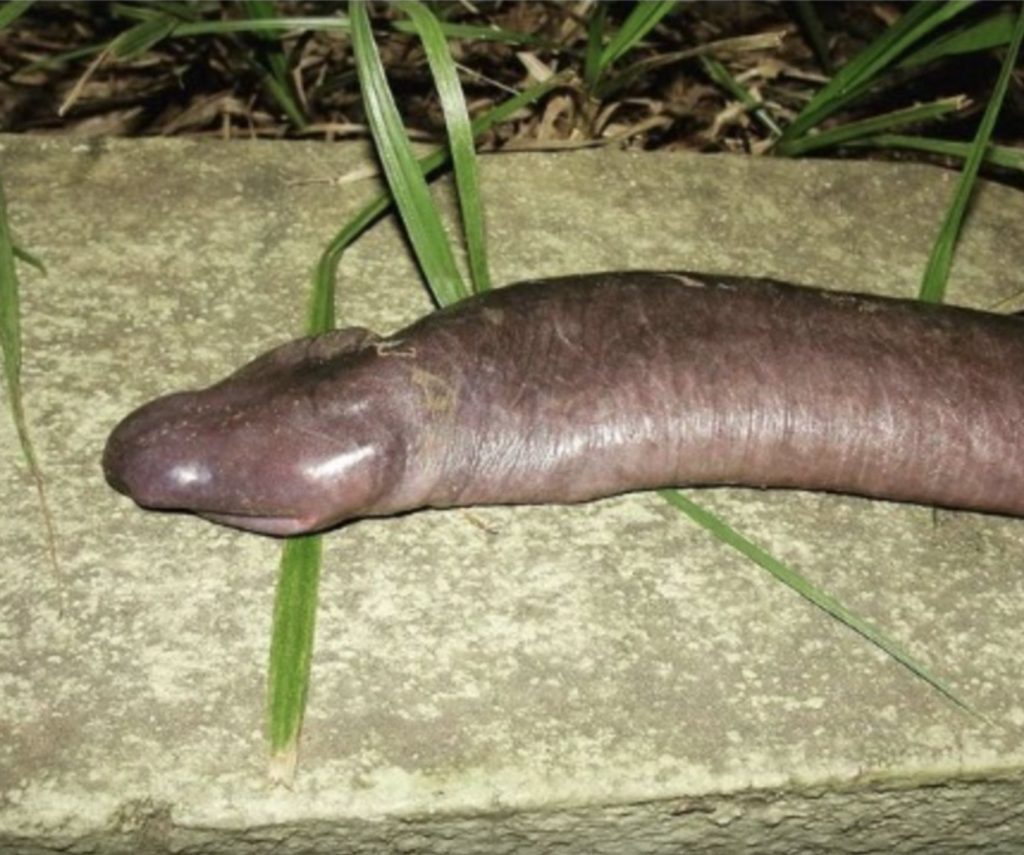
The animal world is full of surprises, with some creatures being more eye-catching than others because of their strange looks or unusual nature.
When I first saw a picture of this weird “penis snake,” I thought it was a joke. But, to my surprise, it turned out to be a real animal. So, let’s dive into the story behind the viral image that has left thousands of people in shock.
Throughout history, anything shaped like a phallus has grabbed attention and sparked curiosity. A few years ago, images of a strange-looking creature started making the rounds online, leaving many people scratching their heads in disbelief.
With its unique appearance, this mysterious animal quickly earned nicknames like the “penis snake,” “blind snake,” or the “man-aconda.”
But no, it’s not what you think.
Even though it looks a lot like a snake, this creature is actually called *Atretochoana eiselti*. It’s not a snake at all, but an amphibian, more closely related to a salamander. It’s also the largest known lungless tetrapod, which means it breathes through its skin instead of lungs.
This rare animal lives in the waters of the Amazon in Brazil and was hard to find for a long time. It was first discovered by Sir Graham Hales during an expedition with Sir Brian Doll in the late 1800s.
However, it wasn’t officially described until 1968. After more research, scientists reclassified it in 1996, giving it its own unique genus, *Atretochoana*.
In 2011, this species was rediscovered in the Amazon region. It lives only in the Amazon River and its largest tributary, the Madeira River in Brazil. The “penis snake” has only been found in this area and nowhere else in the world.
The viral pictures that blew up the internet a few years ago actually came from 2011. That’s when a whole family of these phallic-shaped creatures was found at the bottom of the Madeira River in Brazil. They were discovered when the river was drained during work on a hydroelectric dam.
Julian Tupan, a biologist working with the Santo Antonio Energy company on the dam, explained that not much is known about these lungless, limbless amphibians.
“Out of the six we collected, one died, three were released back into the wild, and two were kept for study,” he told *Estadao*, according to the U.K.’s *The Sun*.
Tupan pointed out that these “snakes” aren’t dangerous and are unlikely to show any aggressive behavior.
“Even though they look like snakes, they’re not reptiles; they’re more closely related to salamanders and frogs. We think the animal breathes through its skin and probably eats small fish and worms, but that hasn’t been proven yet.
“The Amazon is full of surprises when it comes to reptiles and amphibians. There’s still a lot more to discover.”
According to a paper published in the Brazilian scientific journal *Boletim do Museu Paraense Emílio Goeldi: Ciências Naturais*, one of these creatures found in the riverbed was photographed extensively. Some of the animals were released back into the Madeira River, while others were sent to the Emilio Goeldi Paraense Museum in Belem, Brazil.
The most popular photo, which Julian Tupan shared on Instagram, shows an adult female *A. eiselti* that’s just under 40 inches long.
Even though these creatures are fascinating, there’s still a lot we don’t know about them. One mystery that puzzles researchers is their diet. Scientists think these phallic-shaped animals might eat small fish, worms, and other aquatic invertebrates, but more research is needed to confirm this.

Another mystery about these creatures is how they breathe, as scientists haven’t confirmed the method yet. When the six specimens were discovered in 2011, it made things even more puzzling. What’s especially interesting is where they were found— in cold, fast-flowing water with limited oxygen. Since warmer water holds less oxygen, their ability to live without lungs is even more remarkable.
Based on these findings, scientists believe this species might be widespread across the Brazilian Amazon and could even extend into Bolivia.
Nature constantly surprises us with its endless wonders. From the deepest oceans to the tallest mountains, the natural world is full of amazing things waiting to be discovered.
Share this incredible story on Facebook with your friends and family to spark their curiosity and get them talking about the wonders of nature!
My Cousin Deliberately Made My Wedding Dress Two Sizes Too Small – She Was Astonished When She Saw How I Handled It

When Jess and Michael get engaged, her cousin Sarah decided to sew her wedding dress for her as a gift. But during the final fitting, Jess discovers that the wedding dress is two sizes too small. Will Sarah fix her error, or will Jess have to take things into her own hands?
My cousin Sarah and I have always had a complicated relationship. She’s loud and bubbly, but also the type of person who craves the spotlight. And because of that, our entire family gave her the attention she wanted. It made more sense to shine the spotlight on Sarah, rather than ourselves.
When Michael and I got engaged after being together for four years, my whole family seemed genuinely excited for me.
Sarah even got all of our girl cousins together, along with my best friends, for a night out. Ending in an Airbnb where we continued the party, because I was the first of us to get engaged.
During that night out, Sarah came up to me, a glass of champagne in her hand.
“Jess! I have a great idea!” she said.
“What?” I asked. “What do you want to do?”
“I want to make your wedding dress for you!” she exclaimed, swaying to the music as she spoke.
Now, Sarah is a brilliant seamstress, and she’s made some incredible outfits in her young career so far. Despite our complicated relationship, the thought of Sarah making a dress for me was actually a lovely idea.
“Really? You’d do that for me?” I asked, touched by the gesture.
“Of course, Jess! It’ll be perfect!” she replied with a smile that seemed nothing but sincere at the time.



Leave a Reply